eBay “Product-Based Shopping Experience” Is Rolling Out – Does Your Inventory Management Software Fit the Bill? [Update June 11th, 2019]
IMPORTANT UPDATE ON PRODUCT-BASED SHOPPING EXPERIENCE: eBay has put the introduction of the new listing process on hold. In those countries where the product-based shopping experience was already activated, a rollback is currently taking place (e.g. USA). This is what eBay also communicates on its US developer page. There are signs that this is only a delay and that there are plans to reintroduce the “Product-Based Shopping Experience” at a later date. We asked eBay Germany and they told us that there is no timetable yet for the reintroduction of the product-based shopping experience.
This means for you as an eBay seller: “product-based shopping experience” is still important in order to be able to sell products on eBay in the future. You should deal with this topic as early as possible. The following article provides a comprehensive overview. Please note that dates may no longer be correct after the mentioned update. The rest of the content remains valid.
– UPDATE END –
eBay’s has moved to the new product-based shopping experience. Here is everything merchants need to know about the new eBay listing requirements.
What is the New eBay Product-Based Shopping Experience?
On August 15, 2018, eBay launched the “Product-Based Shopping Experience”. The new eBay listing means far-reaching changes for retailers and buyers with regard to the presentation and categorization of products.
While buyers will be able to find and compare offers more quickly in the future, merchants will have to assign their products to a unique category using a unique GTIN (e.g. EAN or UPC). In return, they receive information from the eBay catalog such as product descriptions, images and features.
Even though only a limited number of product lines from major manufacturers have been initially affected. Starting August 15, 2018 the product-based shopping experience will be rolled out category, by category until all products fit the new model. eBay expects to complete all categories by the end of 2019. Retailers who implement these changes NOW can gain eBay listing ranking advantages and sell more successfully on eBay. Merchants who don’t match their products with the new eBay catalog, will find that their products will simply drop out of the eBay listing.
In this article you will learn
What the eBay product-based shopping experience is, how it will be implemented and what eBay is planning
The benefits of this innovation for your customers and for you as a seller
What you have to do in order to meet the requirements not to fall out of the eBay listing
What new (sales) opportunities will be generated for you as a retailer as a result of the eBay product-based shopping experience and how you can optimise your eBay ranking
How you can use magnalister to prepare your online shop for the product-based shopping experience and list your products automatically in the right eBay categories
eBay’s Product-Based Shopping Experience Will Seem Familiar to Most Merchants
Whether you operate a shop and use online marketplaces as additional sales channels or place your products directly on the marketplaces – there is usually no way around eBay and Amazon.
Retailers wonder what this has to do with the product-based shopping experience? Quite simply: What Amazon already practices on a large scale today, namely the grouping of the same products into clear search results, is also finding its way onto eBay. The online marketplace is thus reacting to criticism of its search result pages, on which previously similar products were displayed as continuous, unclear list entries.
With the new product based shopping experience you will see another result page than before. The display is much clearer for the buyer. In addition, the search result pages are reduced. eBay product pages are also restructured:
The update not only optimizes the eBay search results. The article pages will also be enhanced by the product-based shopping experience. This includes new feature boxes below the offered item, which should make it even easier for buyers to compare filtered results with each other. For example, if you are looking for an “Programable Thermostat” with the item status “New”, the feature box provides information on how many other sellers offer this item as new.
The second innovation at item level is the “About this product” box. Important for retailers to know: In the eBay product description, images and features are provided by the eBay catalog, but you can still add additional information to your listings to improve your eBay listing. The “About this product” box should not be confused with the “Item description”, which is still available to you as a seller and can improve your eBay ranking (more info).
As a first step, eBay already started to clean up its product catalog (also called eBay catalog) in March 2018. Individual product lines were merged and product categories revised – the whole thing falls under the term “Inventory Optimisation”.
Since April 2018, retailers have had to assign the first products on the eBay marketplaces USA, UK, Canada and Australia to the eBay catalog in order to be or remain listed. As of August 15, 2018, these requirements will also apply to eBay Germany. As already mentioned at the beginning, this only affects some product lines selected by eBay from the manufacturers Apple, Amazon, Google, Dyson and Jawbone (for an overview) for the time being, but the matching of further products is to become mandatory as early as mid-September 2018.
Additional categories/product lines will follow in throughout the course of 2018 and 2019.
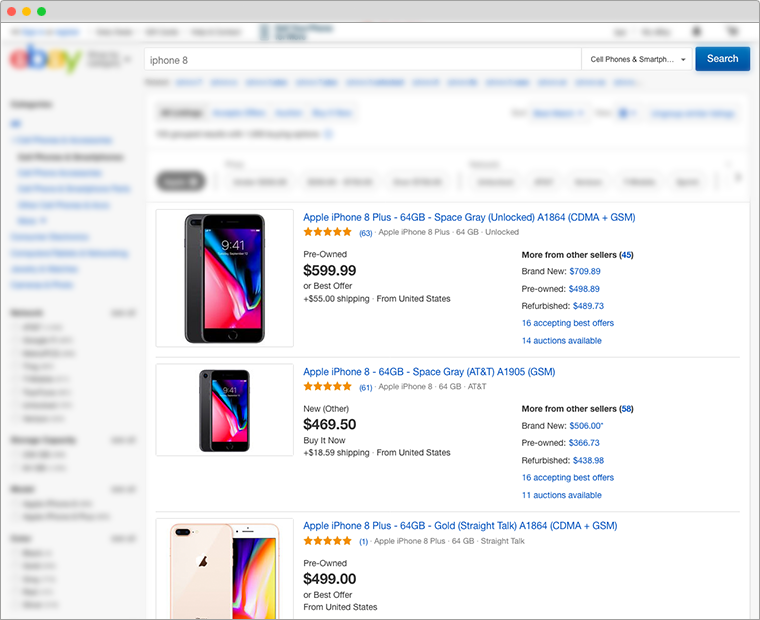
Figure 1.1: This is how the search results look before the introduction of the Product-Based Shopping Experience.
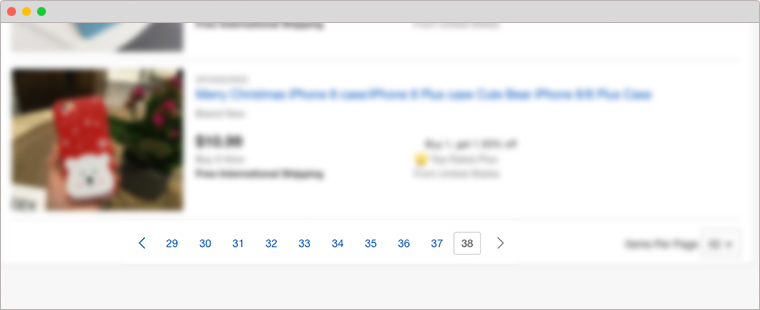
Figure 1.2: Frequently offered items such as the “iPhone 8” result in a large number of search result pages – this makes it difficult for the buyer to find the right offer for him.
Be Prepared – Don’t Waste Time – eBay Takes the New Product-Based Shopping and Selling Experience Seriously – and You Should, Too.
For retailers on the eBay marketplace, if you do not sort your products into the proper categories specified by the new eBay catalog, they will no longer appear in the search results in the future. eBay writes about this:
“We reserve the right that offers without a category link can no longer be posted in the future or will no longer be displayed in the search results.”
In the introductory phase of product-based shopping experience, product lines of large manufacturers are affected first:
Overview of the introductory stages of the Product-Based Shopping Experience
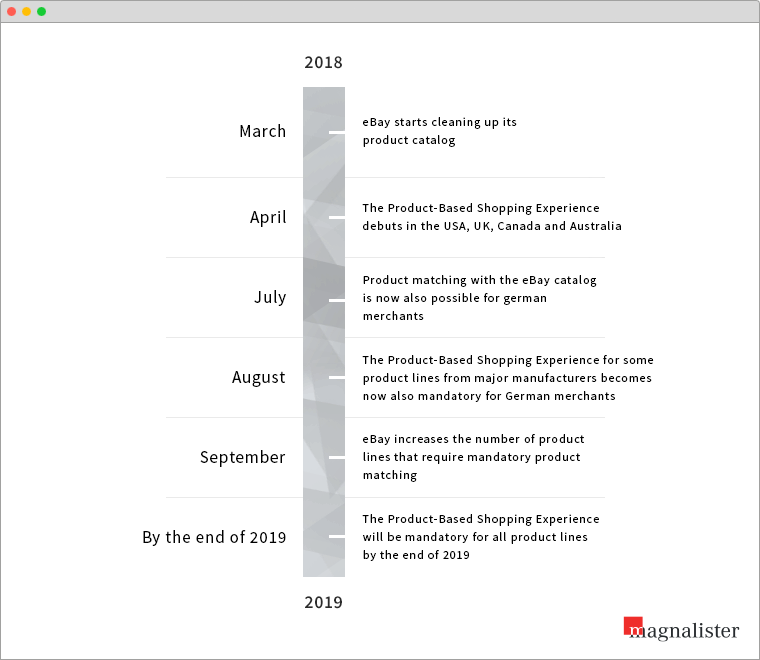
Infographic 1: The time steps to implementing eBay’s Product-Based Shopping Experience.
Catalog Product Lines
| Brand | Product Line |
|---|---|
| Amazon | Echo, Fire Stick |
| Apple | iPads, iPhones, TV |
| Dyson | AM Cooling Fan, AM Fan Heater, AM Humidifier, Pure |
| Chromecast, Home | |
| Jawbone | Jambox |
| NEST | Thermostat |
| Roku | Premier/Express/1/2/3/4 |
Table 1: retailers who sell items from these product lines should prepare well for August 15, 2018 and the changes in the eBay listing process.
eBay has published a complete list of affected products from the above product lines. You can find it on the website of the eBay Developer Program. For the US market you can download the product list as a CSV file here.
In addition, eBay has already published the changes in the eBay catalog as well as the affected product lines, the matching of which will be mandatory starting in September 2018. A list can be found here.
Practical Guide: How You as a Retailer Are to Post Items on eBay After the Introduction of the Product-Based Shopping Experience
As a seller on eBay you have several methods at your disposal to list your products correctly Private sellers usually choose the classic way via the eBay sales form. If you regularly sell on eBay or are an established retailer, the listing plugin magnalister is the ideal solution for your online shop, in order to quickly master the introduction of the product-based shopping experience with minimal time and effort.
For product matching, which is mandatory as of August 15, 2018, eBay already provides all important information such as product title, product image, description, unique product ID (e.g. GTIN), product features, the appropriate category and a link to the product page provided by eBay directly from the eBay catalog. You can now select the appropriate product from the results list.
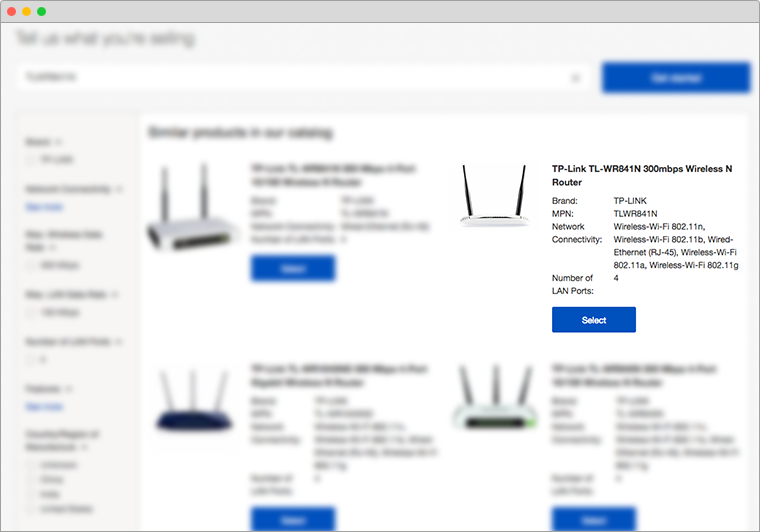
Figure 2.1: eBay suggests a suitable article from the eBay product catalog after entering the product.
In the next step, a listing draft is created in which all product-relevant information has already been entered. Here you also have the option of adding information to your products, such as article status, additional product images and product features as well as an individual description text . As usual, you define the offer format, duration, price, quantity and also the payment and shipping conditions.
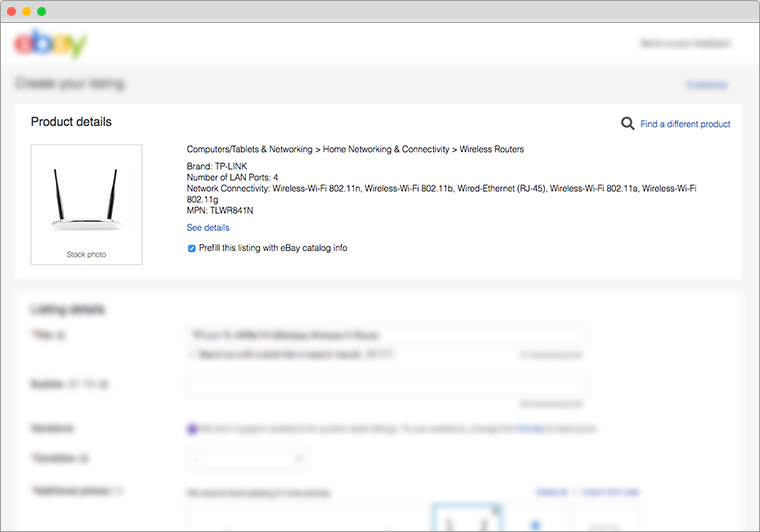
Figure 2.2: The article characteristics are taken over from the eBay catalog into the listing draft. You don’t have to worry about the correct classification of your product into the eBay categories anymore.
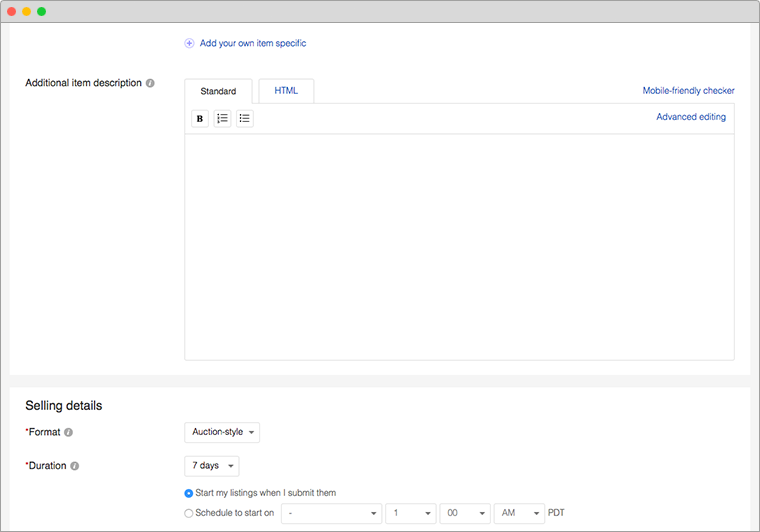
Figure 2.3: Even if eBay already provides a lot of product information, you can make additional entries and write a supplemental description text.
If you cannot find a suitable match for your product from the eBay catalog or if you discover missing article features, eBay recommends sending an e-mail to sdsupport@ebay.com . According to eBay, a dedicated team is available to introduce the product-based buying experience and take care of adding/changing catalog content. A detailed video of the new sales process on eBay can also be found on the eBay seller portal.
As a retailer with your own online shop or merchandise management system connected to the eBay marketplace, you usually use other ways to post your products on eBay. You either access one of the eBay APIs directly in order to transfer the products from your system to eBay or you use an appropriate plugin like magnalister, which does the synchronization for you.
In both cases, your product data is matched with the eBay catalog. One of the most important matching criteria is the so-called GTIN (Global Trade Item Number)
The GTIN often corresponds to the UPC number of a product or the ISBN number of a book. An important step on the way to the successful listing of your articles on eBay after the introduction of the product-based shopping experience is the identification of all products with a unique identification number.
The magnalister Shop Plugin Can Do The Work for You
If you already use magnalister as an interface between your online shop and eBay, you can sit back and relax. The latest update of the plugin makes product matching with the eBay catalog very fast and easy.
All products are automatically matched, sent to eBay and sorted into the right eBay categories. Products that cannot be clearly assigned are displayed to you in list form and you have the option of selecting the appropriate product from the eBay catalog directly from your shop backend. Further information about the advantages of magnalister can be found below in the course of the article.
What the Product-Based Shopping Experience Means for eBay Buyers
If you sell your products on eBay as a retailer, the buyers on the online marketplace are also your direct customers. As a successful retailer, you need to know your customers’ needs and shopping habits. It helps to know which advantages the product-based shopping experience has for buyers.
In May 2016, eBay introduced product reviews as part of its efforts to improve information content. Since then, buyers have not only been able to rate sellers, but also the products themselves. In addition, a clearer article page was rolled out in mid-May 2018, which will be further improved with the introduction of the product-based shopping experience.
With these measures, eBay is getting closer and closer to the world’s leading online retailer Amazon and has correctly recognized that the success of the marketplace increases and decreases with the willingness of users to buy.
Optimizing the eBay search results pages by grouping similar products is a long overdue step towards building a better and much more intuitive shopping experience. The revised article page also helps the buyer to quickly find the best offer with the corresponding article condition.
Overall, the ability for the buyer to compare products, is significantly increased, the buying process is accelerated and the relevance of eBay as a shopping platform increased. Above all, the structured catalog information brings eBay closer to its goal of creating a completely individual shopping experience for the buyer. In the future, the output of top rated listings will no longer depend solely on the price, but also on the shopping habits of the users.
How You as a Retailer Can Benefit From the Product-Based Buying Experience
It’s obvious that eBay’s introduction of the product-based shopping experience is designed to make the shopping experience more attractive for buyers. Retailers will have to initially update their product listings, which can be quite time-consuming depending on the volume of items; without using an interface tool with an automatic catalog matching function such as magnalister.
Nevertheless, the sooner you come to grips with the topic and make the necessary changes, the greater the chances of benefiting from the product-based shopping experience. If you start NOW to match your products with the eBay catalog via unique identifiers such as the GTIN, you will gain a big advantage over retailers who are not responding to the changes.
It’s obvious that the eBay update is a natural selection within the dealer community. How can you can gain a competitive edge? – at least initially after introduction – or even get hold of the new top box, which can massively increase your conversion rate
Traffic increase for product listings: The product-based shopping experience makes eBay clearer for buyers and more attractive as a marketplace/online retailer. The overall traffic increases, from which you as a retailer naturally profit. In addition, the number of visitors to product pages also increases, because when buyers find products on the search results pages more easily and quickly, they click on them.
Quicker product placement: With just a few clicks you can compare your new products with the eBay catalog via the eBay sales form and automatically receive all important product information. This shortens the research time, e.g. for product features or suitable product images.
Category matching: If you compare your product catalog with the eBay catalog and select suitable products, the manual selection of eBay categories is no longer necessary. The marketplace automatically places your products in the most suitable category. In addition, items that fall under the product-based shopping experience are only assigned to one category.
Individualization options still exist: As a retailer, you can add your own description texts and image material as well as other product features even after the introduction of the product-based shopping experience, set your offers apart from the competition and thus improve your eBay ranking.
What Retailers Can Do to Get Into the New eBay “Top Box”
With the introduction of the product-based shopping experience, “Top Boxes”are introduced both on the search results page and on the product page, which suggest a seller’s offer for the selected product as a best match. The idea was adopted from Amazon – known there as the “buy box” – usually increases the retailer’s conversions many times over and is therefore a hotly contested place to be seen. This raises the question of the criteria according to how the top box on eBay is awarded.
Basically the same applies for the top box as for a top listing: The eBay ranking algorithm is responsible for the listing position. Even if eBay does not reveal all variables, more detailed information can be found in the eBay Customer Service Center and in this article. In summary, the positioning in the search results depends significantly on the following five factors:
- Competitive prices: Not to be equated with the lowest price. If your product is in an competitive price range and you can score with other factors, the buyer is not automatically recommended the cheapest product. If you are outside an attractive price range, however, this factor gains in importance and your listing position drops considerably.
- Delivery conditions: The faster you deliver and the more reliable you are, the better your chances of being in the top box. Merchants who offer their products via eBay Plus (free premium shipping), for example, can significantly improve their eBay ranking.
- Service and response times: eBay measures the satisfaction of your buyers, including the rating system and response times to queries. If you maintain your service level over a longer period of time, this will have a positive effect on your eBay listing.
- Sales conditions: These should be as transparent as possible. If you do not ship your products free of charge, you clearly determine the shipping costs. Payment methods and return conditions should also be clear to the buyer.
- Sales volume: The eBay ranking algorithm recognizes how many successful sales you have made recently. The more sales there are on the credit side, the better you rank. Conversely, if you have not sold any products for a long time or if there have been problems or complaints during the sale, you run the risk of falling in the eBay listings.
By the way: For all articles that do not fall under the product-based shopping experience, an optimal product title, high-quality product images, complete product features and a comprehensive product description are also important ranking criteria, as this information is not imported centrally via the eBay catalog.
With magnalister, You Can Master the Transition to Product-Based Shopping Experience with Minimal Time and Effort
magnalister is an interface plug-in available for many shop systems like Shopify or Magento and marketplaces that saves you a lot of time and work when selling on eBay. It automates most of the tasks associated with the introduction of the product-based shopping experience.
The listing tool compares the products entered in your online shop with the eBay catalog and checks whether clear criteria such as GTIN, UPC, EAN, ISBN, brand or article manufacturer number are available for the eBay categories concerned. If the information matches the eBay catalog, when transmitting the product data to eBay, magnalister is taking into account the new eBay criteria. This also includes the correct categorisation of your products on eBay.
Items that cannot be assigned automatically via matching, because unique identification features are missing, can be manually matched from the shop backend with matching products from the eBay catalog. With just a few clicks, you can assign your entire product range to the matching eBay catalog entries.
If you add new products to your shop, magnalister automatically triggers a match with the eBay catalog. After successful matching, you can use the “Inventory” tab to view the current status of your products on eBay at any time and see at a glance which product listing was matched with which eBay catalog product. With just one click on the magnalister eBay „Inventory“ tab, you can also get a quick overview of your current offers on eBay.
If you notice that there is no counterpart for your product in the eBay catalog, you can easily inform eBay about it via magnalister and submit a new product category proposal. In magnalister’s inventory overview, the respective processing status is displayed for your to see at all times.
It is important to know that If you already use magnalister in your online shop, you will automatically receive the plug-in update for the product-based shopping experience and can start the matching process immediately! Retailers who do not yet use the magnalister interface can test the plugin fully and free of charge for 30 days and then continue to use it for a small pricing.
What Online Shop Systems Work With the magnalister Plugin?
magnalister maintains close partnerships with shops and marketplaces
The magnalister interface was developed in close cooperation with shop partners and the world’s largest online marketplaces. And magnalister continually works with them to keep their Plugin up to date. Currently, the magnalister plugin (optimized for the introduction of eBay’s product-based shopping experience) is available for the following shop systems, but also in a “stand-alone” version, magnalister “PIM”:
- Shopify
- Magento
- PrestaShop
- WooCommerce
- osCommerce
- Gambio
- xt:Commerce
- modified
In addition to eBay, the magnalister plugin can be connected – depending on the shop system – to the following international online marketplaces, among others:
- Amazon (Europe, USA, UK)
- Google Shopping
- Etsy
- Ricardo
- Rakuten France, Germany and UK
- Cdiscount (France)
- Check24 (Germany)
- Ricardo (Switzerland)
- Hood.de
- Billiger.de
A complete list of the available interfaces can be found here.
In addition to easy product upload to the most popular online marketplaces, magnalister offers indispensable functions for savy merchants such as a comparison of the order status (e.g. “shipped” or “cancelled”), an inventory comparison (prices & stock quantities) as well as a convenient administration of orders through automatic order import. This means that invoices can be created centrally in the online shop or the connected merchandise management system.
magnalister also contains a hook point system for individual extensions. magnalister’s first-class customer support is there to provide expert guidance as to the special features of the individual marketplaces and to answer all your questions.
This is especially interesting for international retailers: magnalister also supports the sale of your products directly from your shop system to foreign online marketplaces. If, for example, you want to sell on eBay.co.uk (Great Britain), eBay.it (Italy) or eBay.es (Spain), you can define country-specific contents, prices and shipping costs for each article. Language barriers are prevented right from the start, because the magnalister plugin accesses the languages stored in your online shop.
All magnalister features are explained to you in detail in a free on-screen training from magnalister.
BOOK A FREE ON-SCREEN TUTORIAL NOW
Conclusion: The eBay Product-Based Shopping Experience Has Far-reaching Changes and Benefits for Both Buyers and Retailers.
With the launch on September 15, 2018 and throughout 2019, eBay buyers will gradually be able to enjoy a significantly improved shopping experience. The product search will become clearer, the article pages offer uniform product information and the introduction of the top boxes, which are comparable to Amazon’s “Buy Box”, will probably speed up the decision-making process. There are no disadvantages for the buyer here.
eBay hopes that a more user-friendly shopping interface will result in more buyers on the marketplace and an increase in conversions. Aspects that also benefit retailers. However, they are already facing new challenges.
Which Sellers Will Win Following this Update?
If you want to continue selling certain products from Apple, Amazon, Dyson, Google and Jawbone from August 15, 2018 onwards, you must update your listings to the new eBay “product-based shopping experience”. For all others there is only a limited time you can wait to update, because eBay wants to complete the process for ALL products by the end of 2019.
To ensure that your items will continue to be listed, you should act as quickly as possible and match your products with the eBay catalog. It is crucial that your product is placed in the category specified by eBay – otherwise your listing will simply fall out of the shop and you lose your eBay listing.
The magnalister interface, which is available for the most popular shop systems such as Shopify, Magento, WooCommerce, PrestaShop, Shopware, Gambio or xt:commerce, provides a convenient solution. The magnalister plugin automatically compares your products with the eBay catalog. and transfers all product information to the marketplace if matching and your upload is successful.
This saves you a lot of time and aggravation that you would otherwise have to invest in researching the appropriate eBay catalog entries and manually updating all your listings. magnalister also provides you with valuable additional capabilities to list your products on the world’s most popular online marketplaces.
Questions?
The magnalister team will be glad to answer your questions, so please contact our Support or call us on +49 30 / 120 76 74 12.
About magnalister
magnalister is a multi channel listing tool and the market-leading inventory management software plugin for many online store systems. The tool has managed more than $2.1 billion in orders and uploaded more than 70 million products to marketplaces like eBay, Amazon & Co.
magnalister is a close partner with marketplaces like eBay and Amazon and has steadily grown since 2007. By exchanging seller and developer experiences, the engineers are constantly extending and improving the magnalister interface. For more information visit the website
https://www.magnalister.com/en/